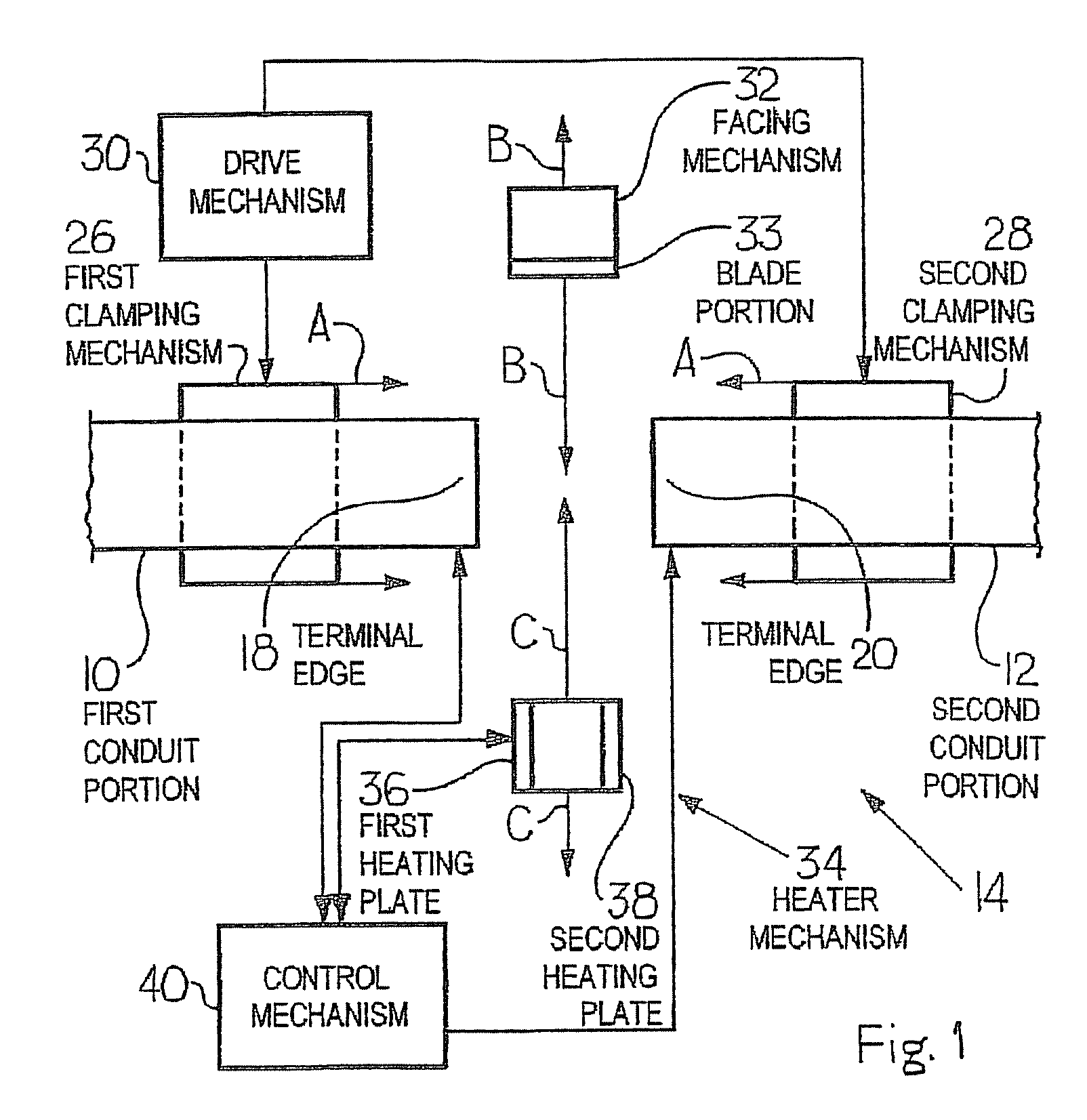Polyvinyl chloride formulations
a technology of polyvinyl chloride and formulation, applied in the field of polymer, can solve the problems of reducing line pressure, unnecessarily allowing water to leak into the area surrounding the piping, and unsightly and intrusive above-ground piping, and achieve the effect of improving elastomeric and expandability characteristics and properties
- Summary
- Abstract
- Description
- Claims
- Application Information
AI Technical Summary
Benefits of technology
Problems solved by technology
Method used
Image
Examples
example 1
[0072]This example is a polyvinyl chloride composition according to the invention. The ingredients below were combined with 100% virgin PVC resin with no regrind and extruded to form 20 foot (6 m) PVC pipe sections. (All ingredients are parts per hundred based on the PVC resin).
[0073]
IngredientAmountLubricant combination of 2 pphcalcium stearate, paraffinwax and polyethylene waxTitanium Dioxide 3 pphCalcium Carbonate 2 pphProcessing Aid 1 pph(Rohm & Haas K120N)Blue Colorant0.2 pph(Color Matrix)Heat Stabilizer0.8 pph
example 2
[0074]Sections of pipe were extruded as in Example 1 having an outside diameter of 6.6 inches and a wall thickness of 0.4 inches. Two sections of pipe were heat fused using a Model No. 28 hydraulic fusion machine available from McElroy Manufacturing, Inc. at 140 psi interfacial pressure, 204° C. for approximately two minutes and cooled under ambient conditions for about 15 minutes. Two samples were burst-tested according to ASTM D1785, section 6.3 in accordance with ASTM D1599 (Procedure B) at 23° C. after conditioning for 16 hours at 23° C. such that the first sample consisted of only the pipe section (2A) and the second sample had the fusion bond (2B). The minimum acceptable burst pressure is 890 psi. The data are summarized below.
[0075]
Sample 2ASample 2BBurst Pressure1210psi1190psiTime-to Fail95seconds75seconds
[0076]The heat fused extruded polyvinyl chloride pipe according to the invention provides more than acceptable burst test performance. The pipe did not fail at the joint, b...
example 3
[0077]Pipe sections of 16-inch diameter were prepared as in Example 1. The sections were heat fused as described in Example 2. Specimens were removed from the fused pipe with the fused section in the middle (samples in triplicate), as well as sections without the fusion joint. Izod impact testing was conducted on a set of samples according to ASTM D256-02. Tensile properties were evaluated according to ASTM D638-2a on samples with and without the fusion joint at a speed of 0.2 inches per minute. Flexural properties were evaluated according to ASTM D790-03 on samples with and without the fusion joint at a 16:1 span to depth ratio. The results are shown below:
[0078]
Test PropertyResultIzod impact strength (no fusion joint)0.59ft-lb / inIzod impact strength (with fusion joint)0.41ft-lb / inTensile strength at Yield (no fusion joint)7020psiTensile strength at Yield (with fusion joint)5775psiModulus of Elasticity (no fusion joint)391,900psiModulus of Elasticity (with fusion joint)409,500psiFl...
PUM
| Property | Measurement | Unit |
|---|---|---|
| melting temperature | aaaaa | aaaaa |
| interfacial pressure | aaaaa | aaaaa |
| interfacial pressure | aaaaa | aaaaa |
Abstract
Description
Claims
Application Information
 Login to View More
Login to View More - R&D
- Intellectual Property
- Life Sciences
- Materials
- Tech Scout
- Unparalleled Data Quality
- Higher Quality Content
- 60% Fewer Hallucinations
Browse by: Latest US Patents, China's latest patents, Technical Efficacy Thesaurus, Application Domain, Technology Topic, Popular Technical Reports.
© 2025 PatSnap. All rights reserved.Legal|Privacy policy|Modern Slavery Act Transparency Statement|Sitemap|About US| Contact US: help@patsnap.com


